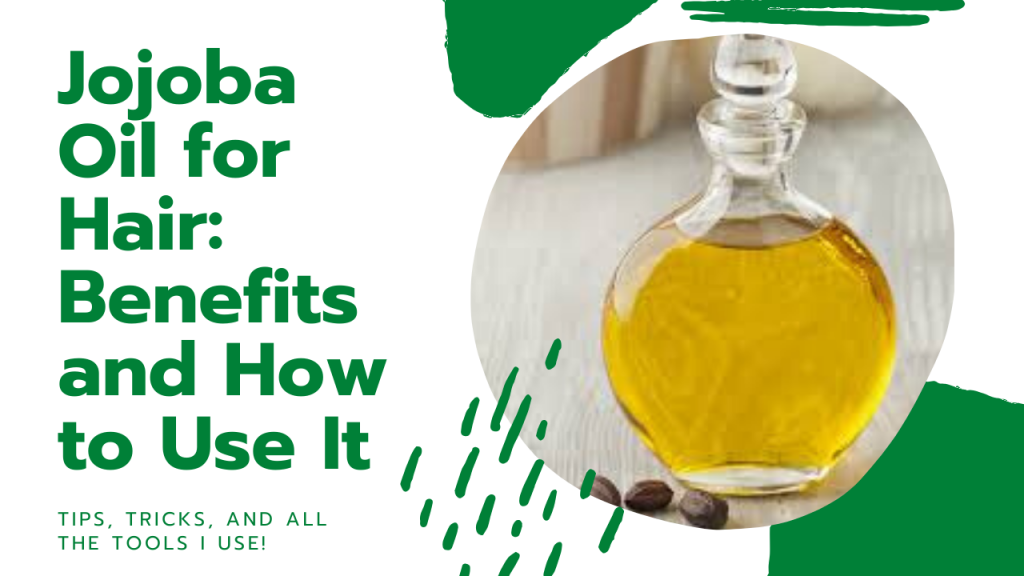Jojoba oil is commonly used in various skin and hair care products, including shampoos, moisturizers, and even makeup removers. When it comes to using jojoba oil on hair, most people use it as a carrier oil, which means that it “carries” other oils (such as essential oils) and improves absorption into the scalp. Let’s have a closer look at the benefits of using jojoba oil for hair.
What Is Jojoba Oil?
Jojoba oil is extracted from the seeds of a plant called simmondsia chinensis, which is commonly known as the jojoba plant. This oil is considered to be “universal” in a sense that most users should not experience any side effects when using it as a pre-shampoo or leave-in treatment (unlike other oils that can make hair brittle and extremely dry). With that said not all types of hair like jojoba oil and you should experiment with very small doses to start with.
Many articles claim that jojoba oil is best suited for thicker hair while other oils, such as almond, are better for thinner hair types. I believe this to be false, because I’ve seen many cases where people with extremely fine hair use jojoba oil with amazing results. Other common complains include:
- Jojoba oil smells like “burnt wood” or “bacon”: Not true, although some types of jojoba oil seem to have a very weak smoky scent to them. Pure jojoba oil has virtually no smell at all.
- Jojoba oil can make hair fall out/shed more than normal: Maybe if you use way too much of it. In general, however, most cases of hair shedding are caused by other ingredients (such as petroleum products) found in commercial oils. Don’t be fooled by the label on the bottle – always read the ingredient list!
The structure of jojoba oil is similar to that of sebum, which is a natural moisturizer produced by our skin. This makes it a superb face moisturizer (when diluted with water), as well as a good way to treat dry scalp/hair.
How to Use Jojoba Oil
Just like any other oil, jojoba can be used in a variety of different ways. I’ll describe some of the most common methods below.
Jojoba as a leave in treatment: This basically means applying some jojoba oil (often mixed with essential oils) to your scalp before washing your hair. Some people leave this mix in for about 20-30 minutes and then wash it out, while others prefer to soak their scalp/hair in oil overnight and wash everything out in the morning. Experiment to see what works best for you!

Jojoba oil mixed with shampoo or conditioner: A very popular technique which is somewhat similar to mixing coconut oil with shampoo. The only difference is that jojoba oil comes in liquid form and doesn’t need to be melted before use! Mixing jojoba oil with conditioner instead of shampoo can often produce much better results – give it a try!
Using jojoba oil after shampooing: This technique doesn’t work for everyone, because jojoba oil is quite heavy and using too much of it will leave your hair looking greasy. Normally, just 1-2 drops of jojoba oil applied to the ends of damp/drying hair should be enough to provide long-term protection from breakage and dryness. If your ends feel somewhat “crunchy” after applying oil, it means that your hair simply doesn’t like this type of oil.
Remember that everyone’s hair is different and the only way to find out which oil suits your hair is through experimentation! In general however, I find that jojoba oil works well in places where coconut oil doesn’t. For example:
- If your scalp doesn’t like coconut oil treatments, try jojoba + essential oils instead.
- If your lengths can’t stand jojoba oil (look greasy and dry), try using a little coconut oil instead.
- Many people find that jojoba oil works best when applied lightly to the very ends while they are still wet after washing. In some cases however, this can make the ends feel dry and crunchy. If this happens – try using coconut oil instead.
Good luck and don’t forget to report back with your results!


